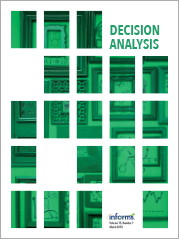To develop effective counterterrorism strategies, it is important to understand the capabilities and objectives of terrorist groups. Much of the understanding of these groups comes from intelligence collection and analysis of their capabilities. In contrast, the objectives of terrorists are less well understood. In this article, we describe a decision analysis methodology to identify and structure the objectives of terrorists based on the statements and writings of their leaders. This methodology was applied in three case studies, resulting in the three objectives hierarchies of al-Qaeda, Islamic State of Iraq and the Levant (ISIL), and Hezbollah. In this article, we propose a method to compare the three objectives hierarchies, highlight their key differences, and draw conclusions about effective counterterrorism strategies. We find that all three terrorist groups have a wide range of objectives going far beyond the objective of killing and terrorizing people in the non-Muslim world. Among the shared objectives are destroying Israel and expelling Western powers from the Middle East. All three groups share the ambition to become a leader in the Islamic world. Key distinctions are the territorial ambitions of ISIL and Hezbollah versus the large-scale attack objectives of al-Qaeda. Objectives specific to ISIL are the establishment of a caliphate in Iraq and Syria and the re-creation of the power of Sunni Islam. Hezbollah has unique objectives related to the establishment of a Palestine State and to maintain the relationship with and support of Iran and Syria. Al-Qaeda’s objectives remain focused on large-scale attacks in the West. We also note a recent shift to provide support for small-scale attacks in the West by both al-Qaeda and ISIL. Our method can be used for comparing objectives hierarchies of different organizations as well as for comparing objectives hierarchies over time of one organization.
Veröffentlichung
Siebert, Johannes U.; von Winterfeldt, Detlof. „Comparative Analysis of Terrorists’ Objectives Hierarchies“, Decision Analysis (INFORMS) June 2020, 17(2), 97-114, https://doi.org/10.1287/deca.2019.0400

Leave a Reply